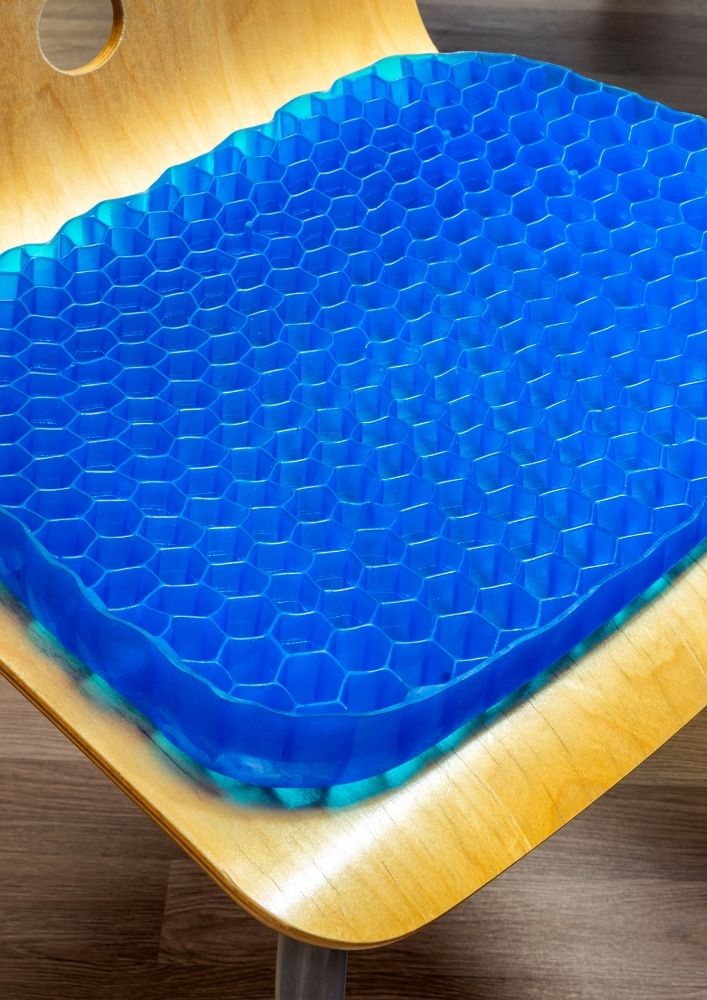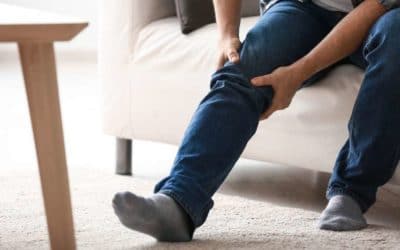What Is the Best Foam for Seat Cushions?
Foam can be a confusing topic. There are many different types, and each one has its benefits. Knowing what you want before buying foam for your seat cushions or other products is essential. The difference between natural latex foam, memory foam, and gel foam is essential to understand, as we will cover the pros and cons of each and compare everything you need.
As a general rule, the best foam for seat cushions is latex foam with a high-density base of 80 to 96 kg/m3 and a soft top layer of 64 to 70 kg/m3. When choosing the foam, you must also consider the intended use of the seat cushions and the required resilience.
With decades of experience researching and designing seat cushions, I can help you discern the best foam for your seat cushion which is most comfortable for you.
My career is dedicated to helping people find the most comfortable way to sit. With almost 30 years of experience running a chiropractic and physiotherapy center, I have published many papers and had the opportunity to speak on national TV about this topic. I have helped people achieve better posture and comfort while sitting by launching a successful Kickstarter campaign, writing a book on this topic, and engineering ergonomic seat cushions, orthopedic mattresses, and ergonomic neck pain sleep pillows.
Seat CushionDoctor's Recommendation
Black Friday Offer!
Get 35% off Orthopedic Seat Cushion
Product DetailsResearch-based Design
Recommended ForBack Discomfort
Video Guide
Video Guide
This insight, combined with my experience in ergonomics engineering design, makes me confident that they can provide some valuable information regarding cushion selection.
Latex Foam Seat Cushion
Latex has become an increasingly popular choice among luxury seat cushion manufacturers in recent years thanks largely to its capacity to conform and respond quickly under pressure without losing shape like some competitor memory or polyurethane foams do while still maintaining its comfort levels for hours after even heavy use.
There are many different gauges of latex density, which can affect the performance, durability, temperature regulation, and cost of your seat cushion. We’ll look at these differences in our guide to help you make an informed decision for your purchase!
Latex Foam Comes in Varying Densities
Density is simply the weight per unit of volume. For foam materials like latex used in mattresses, density is expressed in kilograms per cubic meter (kg/m3). In the table below, we examine some standard density ranges for latex foam and compare these ranges to those of memory foam and polyurethane.
The density of natural latex foam is typically higher than that of other types. Each type has different properties, so the best density for each material will be very different – it can’t be compared by looking at a chart because one kind might not even show up! That’s why you need to know precisely what materials are used to figure out which would work the best with your seat cushion and how firm or soft you want it to feel.
We compared various seating materials and products and found natural latex the best choice. Here’s why:
- A natural latex seat cushion allows your muscles and ligaments to relax and recover while improving your blood circulation due to its pressure distribution.
- Instead of memory foam seats, a 100% natural latex seat is made of natural materials and contains no chemicals.
- Natural latex can align your spine and alleviate pressure points.
- In addition to preventing you from sinking into natural latex seats too deeply, it’s unique cushioning will rebound when you apply your body weight.
- In sustainable latex farming, the sap is harvested from healthy Hevea Brasiliensis trees, while newly planted trees replace older trees.
- I have been designing custom products for decades with natural latex, which has given me so much freedom, which is why the chiropractic and ergonomics fields have always been my passion.
- Memory foam derived from petrochemicals provides less comfort than natural latex foam.
- When buried, natural latex cushion material decomposes in a year.
- In a healthy working environment, latex can help prevent the growth of bacteria, mold, and dust mites. It provides an antifungal and antibacterial environment.
Memory Foam Seat Cushions
The astronauts initially used memory foam to protect themselves during space missions. Memory foam is a shock-absorbing material used in helmets, pads, and other items to protect humans. However, NASA later decided against using memory foam because off-gassing concerns existed.
Here are some reasons why memory foam should NOT be used as a seat cushion:
- We tested and found that memory foam lacks appropriate responsiveness. The responsiveness of a cushion determines how quickly and how much it responds to pressure or motion. A responsive cushion will help you avoid back pain since it helps you move and shift more naturally.
- Some people experience discomfort when seated in memory foam due to its tendency to retain body heat.
- The main material in memory foam is polyurethane, an oil-refining byproduct.
- Several harmful compounds are often added to memory foam, including polyurethane, formaldehyde, antimony trioxide, and petrochemicals.
- As of 2004, all mattresses must be fireproof at a certain temperature point, and the toxicity of foam memory mattresses has increased, making them more hazardous.
- In general, polyurethane foam or memory foam that is too cheap collapses easily. After sitting, the pelvis can sink so far into the cushion that it touches the seat directly, causing “bottoming out.” This could get uncomfortable on the hard wheels below.
- Heat and moisture will likely accumulate if you sit on a memory foam cushion for an extended period. The skin temperature usually rises after a time, which in turn causes sweating. This is part of the body’s reaction to try to cool the area.
The airflow is crucial because it keeps your head cool and comfortable while you sleep and protects your skin from temperature changes. A few companies focus on maximizing airflow, but that’s not the norm.
Gel Seat Cushions
Unlike fluid gels, gel cushions usually use polymers to form flat or contoured pieces of material. These material blocks do not move or flow like fluid gels and are less effective in reducing pressure or absorbing shock than fluid gels.
Several gel cushions were tested on hundreds of our patients, and none significantly reduced pressure points or improved comfort.
Clients rated the honeycomb-shaped gel cushions as the least comfortable (-90%). Although the gel-infused top initially felt cool, our customers complained that it was very hot and did not offer adequate comfort.
Conclusion
So, what is the best foam for seat cushions? The answer to that question depends on various factors, including the intended use and required resilience. However, latex foam with a high-density base of 80 to 96 kg/m3 and a soft top layer of 64 to 70 kg/m3 is generally considered the best option. Latex foam is the way to go if you’re looking for quality seat cushions that will provide comfort and support for years to come.










